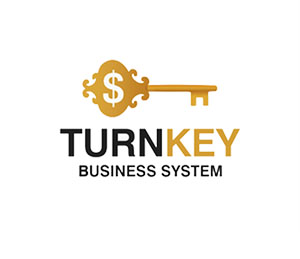US-Switzerland Tariff Dispute: How 39% Duties Could Hit Luxury Goods and Everyday Essentials

US-Switzerland Tariff Dispute: How 39% Duties Could Hit Luxury Goods and Everyday Essentials
On August 8, 2025, trade negotiations between Switzerland and the United States reached a critical juncture.
If an agreement is not finalized, Swiss exports to the US could face a punitive 39% import duty.
This tariff, significantly higher than the 10%-15% rates agreed with the European Union and the UK, poses a direct threat to Swiss-made luxury products, including watches, cosmetics, and premium chocolate.
If an agreement is not finalized, Swiss exports to the US could face a punitive 39% import duty.
This tariff, significantly higher than the 10%-15% rates agreed with the European Union and the UK, poses a direct threat to Swiss-made luxury products, including watches, cosmetics, and premium chocolate.
Trade Deficit and Tariff Dispute: The Facts
According to TradingEconomics, the US-Switzerland trade deficit reached $38.3 billion in 2024. Swiss officials argue that this gap is largely due to Switzerland's role as a global hub for gold refining, where large volumes of precious metals transit before global distribution. Gold and silver were excluded from reciprocal tariffs imposed by the White House in April 2025.Switzerland Under Fire: Why the Tariffs?
Last week's announcement blindsided analysts and business leaders who believed Switzerland was on the verge of finalizing a trade deal similar to those of the EU and UK, which secured base tariffs of 15% and 10%, respectively.
But with a $38.3 billion trade deficit in 2024 — largely due to Switzerland's role as a global gold refining hub — Washington has chosen a harder line. While gold and silver remain exempt from these “reciprocal tariffs,” iconic Swiss exports like luxury watches, skincare products, and chocolate are now in the crosshairs.

US-Switzerland Tariff Dispute: How 39% Duties Could Hit Luxury Goods and Everyday Essentials
Watches: A Cornerstone Under Threat
Watches: Time Just Got Pricier
In 2024, Swiss watch exports to the US amounted to CHF 4.37 billion ($5.4 billion), making the US its largest foreign market (source: Federation of the Swiss Watch Industry).
Swiss watches, by definition, must have at least 60% of their value generated within Switzerland and be technically developed domestically.
A sudden 39% duty would force brands and retailers into difficult decisions: absorb the added costs, reduce profit margins, or pass expenses onto consumers. This disruption is expected to reshape supply chains and extend delivery timelines as companies reassess logistics and inventory strategies.
A Rolex Submariner, currently retailing at $10,000, could soar to nearly $14,000.
Jean-Philippe Bertschy of Vontobel warns: “Brands already increased prices by 5–10% earlier this year. Another hike will be painful, especially for mid-range buyers.”
Coffee and Nestlé's Strategy
Coffee: Nespresso Lovers, Brace Yourselves
While Nestlé claims minimal impact, given its US production footprint, its Nespresso brand may not be so lucky. Tariffs could push up prices on machines and capsules, affecting millions of loyal coffee enthusiasts.
Nestlé, Switzerland's largest consumer goods conglomerate, claims over 90% of its US sales stem from domestic production, minimizing its exposure. However, the premium coffee segment, notably Nespresso, could see price hikes as tariffs target imported machines and capsules.
Cosmetics and Skincare Brands Face Margin Squeeze
Skincare: Luxury in Small Jars, Big PricesPremium Swiss skincare brands - La Prairie, Valmont, Mavala - may be forced to raise prices as they juggle soaring import costs. With no tariff relief similar to pharmaceuticals, expect a tangible mark-up on luxury beauty items.
For companies emphasizing 'Swiss-made' credentials, relocating production is not an option. Historically, brands have absorbed tariffs of 10%-15%, but a 39% surcharge would significantly erode profit margins and affect consumer demand, particularly in the US luxury skincare market.
Luxury Sector: Jewelry and Accessories
Luxury Goods: Richemont's ChallengeHigh-end jeweler Richemont, parent of Cartier and Van Cleef & Arpels , could see 7% of its production costs directly affected. BofA Securities predicts price hikes, which may cool consumer demand.
Analysts forecast that this will lead to retail price increases, further pressuring an already sensitive luxury goods market.
Swiss Chocolate: A Blow to Artisanal Producers
Chocolate: Sweet Treats with a Bitter PriceRoger Werli of Chocosuisse warns that a 39% tariff could push Swiss chocolate prices up by 55%, factoring in the strong Swiss franc. While giants like Lindt & Sprüngli have US factories, smaller artisanal brands – Camille Bloch, Läderach – will feel the squeeze. Swiss-made authenticity is non-negotiable for these brands, limiting their flexibility.
Chocosuisse, the Swiss Chocolate Manufacturers Association, warns that the 39% tariff, combined with the recent appreciation of the Swiss franc, could lead to a real price increase of approximately 55% for US consumers.
Strict 'Swiss-made' origin labeling requirements prevent these brands from outsourcing production, limiting their flexibility. This echoes the Toblerone case in 2023, where Mondelez International was compelled to alter its labeling after shifting part of its production to Slovakia.
The Bigger Picture: A Blow to Swiss Prestige?
Tariffs of 10–15% can be absorbed with minimal disruption. But 39%? That's a seismic shift. While multinational giants can maneuver via local production, Swiss SMEs are deeply tied to “Made in Switzerland” branding face hard choices.As Switzerland scrambles for a trade agreement, American consumers should prepare for a luxury tax of their own - one that might reshape how (and where) they buy iconic Swiss products.
If the 39% tariffs materialize, the Swiss export model to the US will face a paradigm shift. High-end segments such as watches and cosmetics could see demand contraction as price-sensitive consumers reevaluate purchases. Mid-sized producers, lacking economies of scale or alternative production bases, stand to lose significant market share.
On a macroeconomic level, prolonged tariffs risk stifling Swiss economic growth and exacerbating job losses in export-driven sectors. For US consumers, the immediate effect will be felt in luxury retail pricing, but long-term consequences include reduced product diversity and potential supply shortages.
Given the critical trade volume between the two nations, a negotiated settlement remains the most pragmatic solution. However, without resolution, both economies face mounting risks—Switzerland in export revenues and the US in consumer price inflation within key luxury categories.
By Claire Whitmore
August 6, 2025
Join us. Our Telegram: @forexturnkey
All to the point, no ads. A channel that doesn't tire you out, but pumps you up.









Report
My comments